It’s one thing to read about a brand on their website but another to visit their factory and really get a feel for what goes into the products. It’s well over a year since I teamed up with Original BTC and, as their new collection drops, I was finally able to travel to the Potteries of Stoke on Trent to see the shades being made and understand the work that goes into each one.
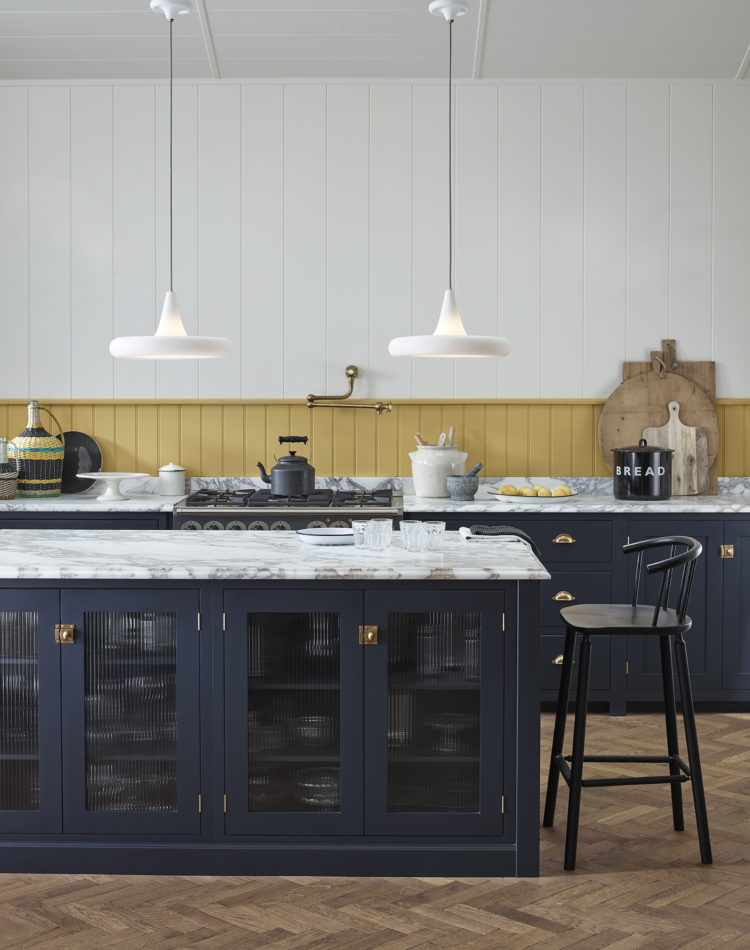
There is something rather wonderful about ceramics factories and I have been lucky enough to visit two – one in Portugal and this one last week. They are warm (that’ll be the firing kilns) and everything is rather ghostly and white. Then there’s the workers – many of whom have been there all their working lives and who bring so much experience to the job – and while it’s a high tech, high skilled job – the tools, often just a sharp knife, a sponge and a series of wooden boards to rest the pieces on – are humble.
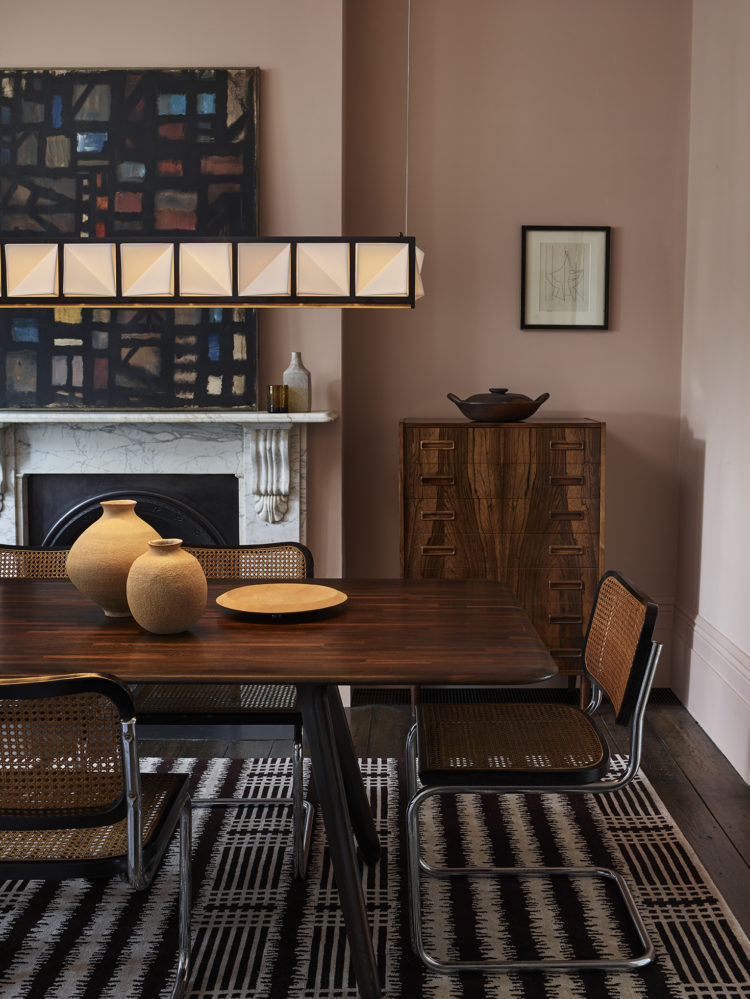
The clay moulds are filled using hand pumps – imagine one of those pumps that dispenses soft drinks in pubs filled with cream – and left to set before being turned out and waiting on boards to go to the next stage. It all feels very calm and unhurried despite the heat and the dust and the roar of the kilns.
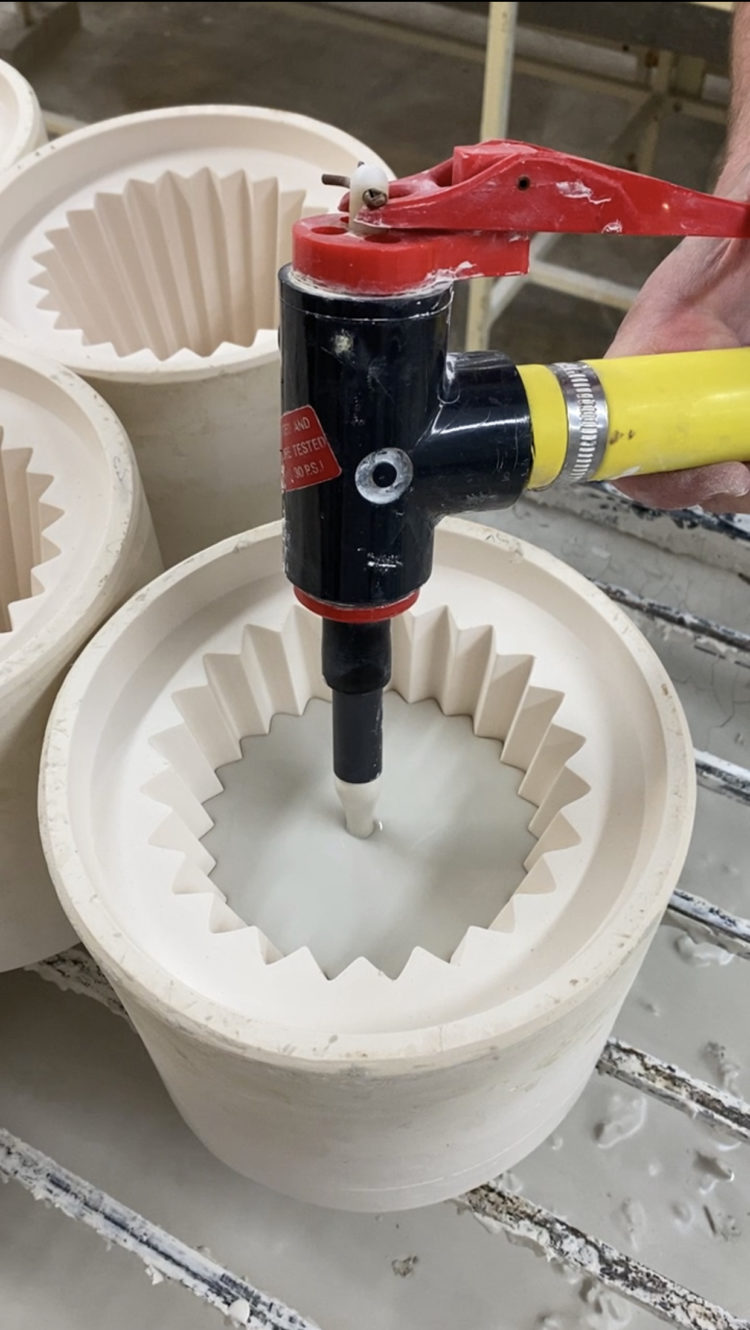
But don’t be fooled by the apparent simplicity of the equipment. Original BTC has been pushing the boundaries of ceramic lights since it was founded in the 90s. Peter Bowles took over this former teapot factory and asked them to use the bone china clay to make lampshades instead – the first company to do so.
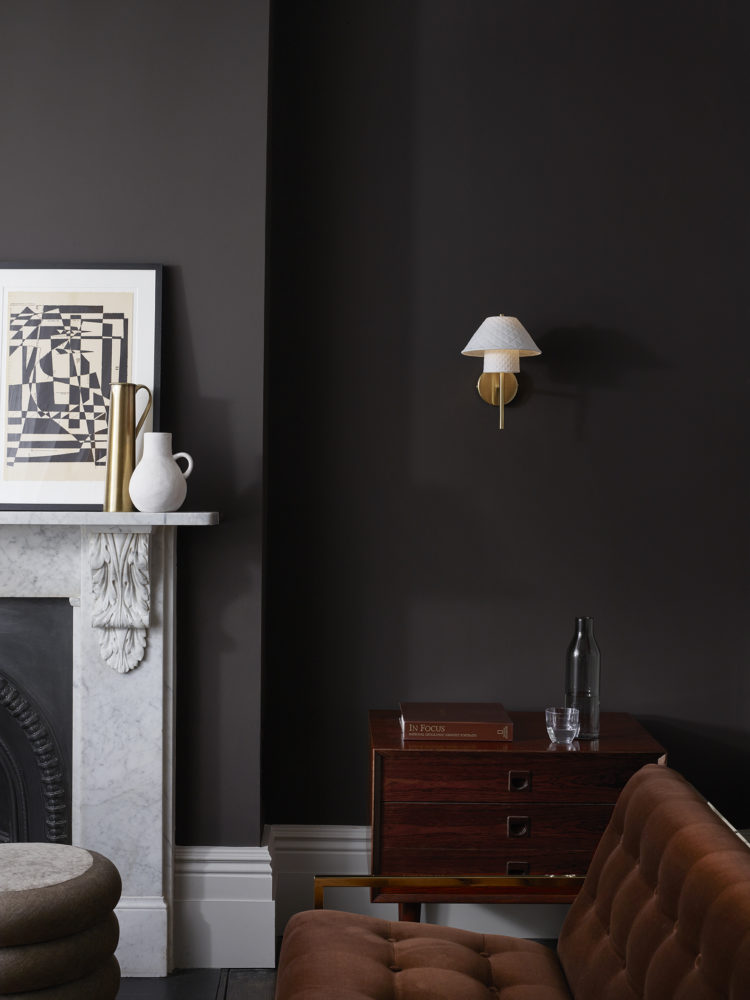
“Accustomed to making teapots, the factory manager thought I was barmy, but the fact that the Hector lamp is now sold in over 80 countries does suggest I was onto something,” says Peter.
Having persuaded his team of the wisdom of the china shade, Peter and his son, Charlie, who showed me round, didn’t want to stop there. They have just completed a series of shades that have taken two decades to develop such was the technical complexity involved.
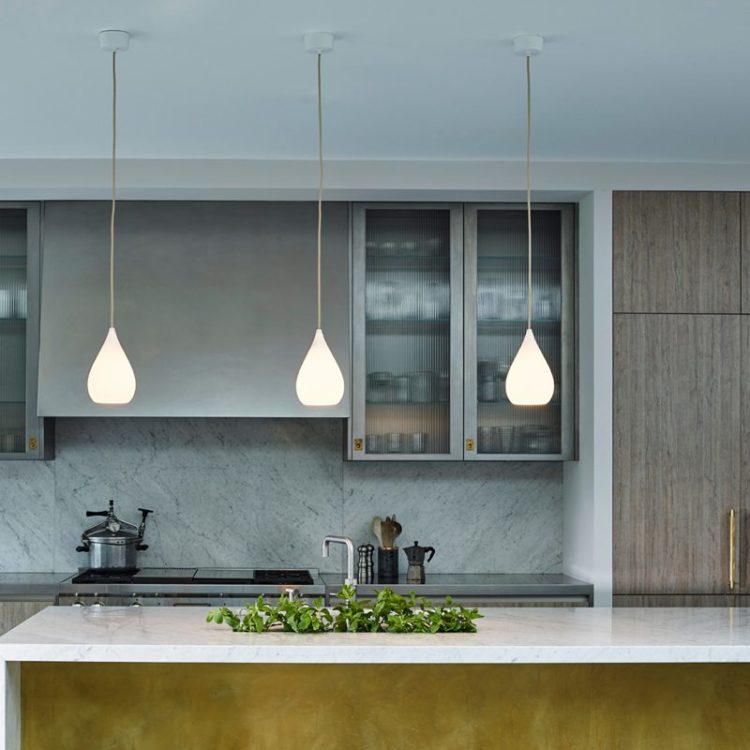
It’s the Drop series. Fans of the brand will probably be familiar with Drop One – a simple curving shape that hangs over countless kitchen islands in hundreds of homes and magazines (see above). But, did you now that it was actually based on the shape of a raindrop?
Because then we get to Drop Two – the raindrop is gathering speed and fattening out as it prepares for splashdown.
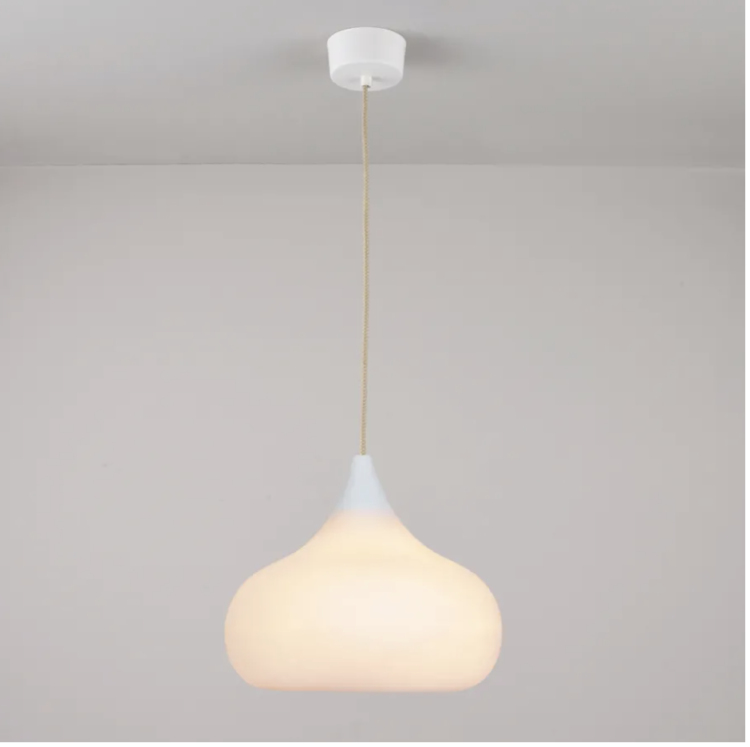
And then there was a pause. Because the newly released Drop Three took a very long time to get right. Designed in 2001 (the year before Original BTC even acquired its bone china factory) it was finally realised earlier this year after 20 years of investment and training in the team. It might look simple but it’s big – 39cm at its widest point – and 21cm high (without the cable) and it pushed the factory’s staff to their limits. It takes two people – four hands – to release it from its heavy mould and, when fired, it must sit on a bone china setter with a prop underneath, to allow for the 10 per cent shrinkage and to stop it sticking to the kiln shelves. Currently all the props and setters are in storage while Peter and Charlie work out how best to re-use them.
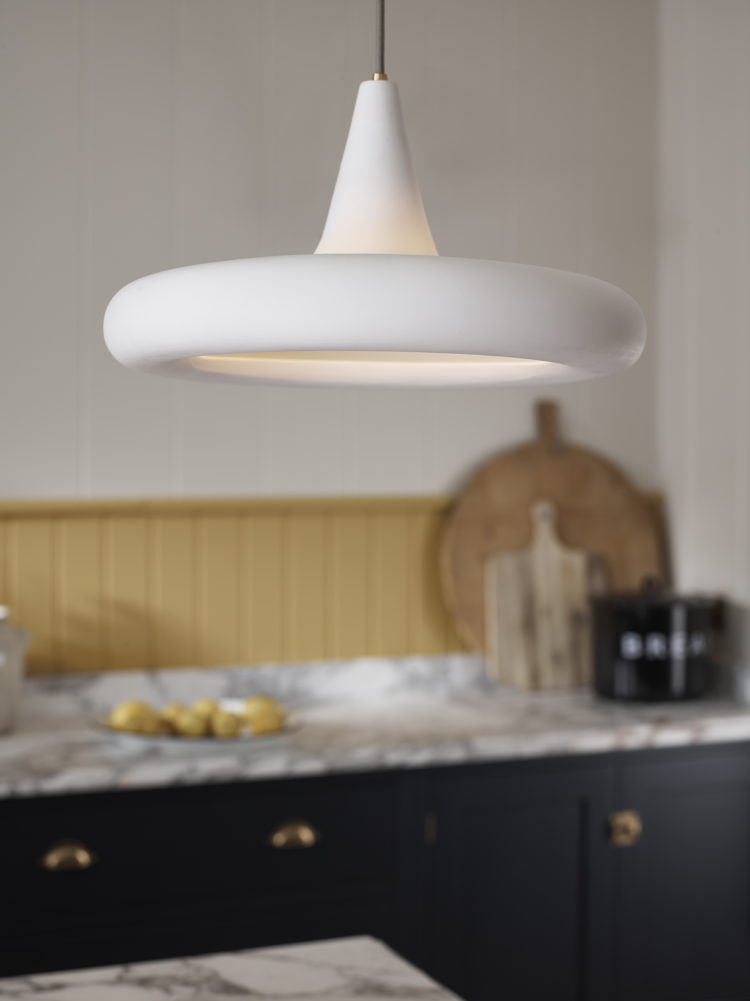
But the result is spectacular – this is the point where the raindrop hits the surface and the sides bounce back up and if I had a kitchen ceiling that was high enough over my table or island I would hang a one, two and three rather than a matching set.
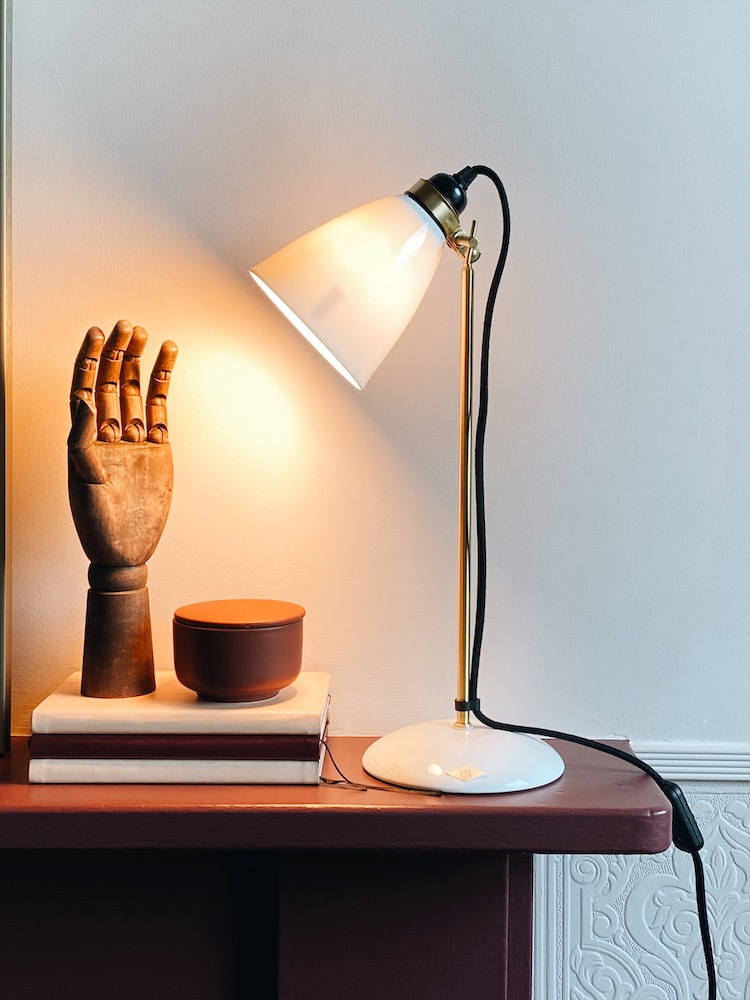
It’s hard to describe the quality of light from a bone china shade. It’s soft and gently diffused but at the same time bright enough to read by. It’s also hard to capture on film so you will sort of have to take my word for it but once you have seen it, you will wonder if you need more of them because while their sculptural qualities are great in kitchens and dining rooms, their gentle luminescence makes them good for sitting rooms and studies as well.
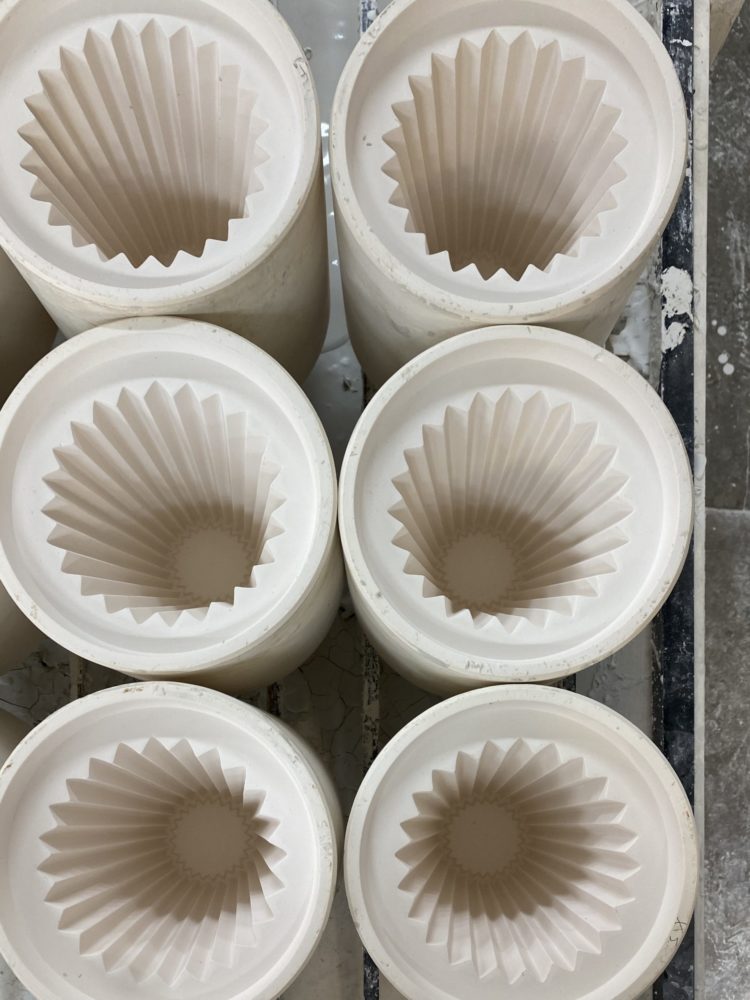
But teapot or lampshade, how are they actually made? I had a go at a couple of the steps and it’s exactly like those old Generation Game TV shows of the 1970s (showing my age here) where a skilled person would demonstrate their craft and the hapless contestant would have three minutes to make their own version – anything from throwing pots (literally in some cases) to icing cakes or learning a dance routine. It is, as they say, harder than it looks whether it’s being strong enough to turn out the moulds or skilled enough to remove your own finger prints at each stage of the process. I will be posting some of this over on my instagram stories later on so if you come to this on the day of publication you will see.
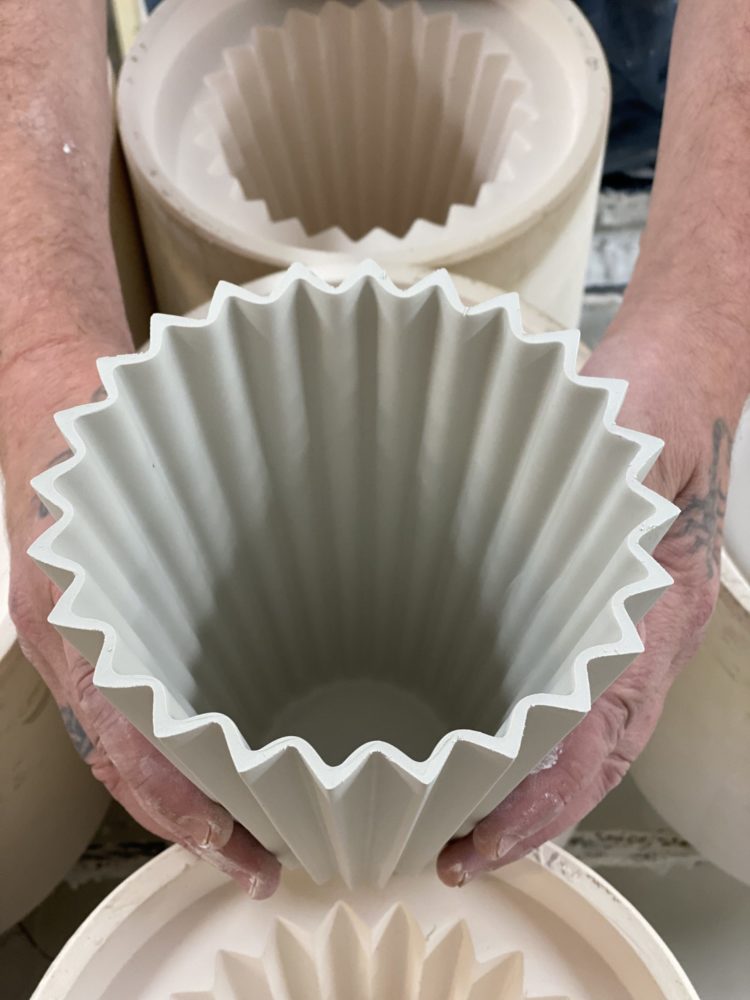
First of all the slip (liquid clay) is poured into the mould where it is left for, what appears to be a fairly random amount of time (but after a while you start to notice all the clocks around the walls and propped up on stands) and is actually carefully calculated depending on the size of the mould. This allows the slip to set hard enough to stick to the edge of the mould but remain liquid in the middle so the excess can be poured away. Another rest, then the mould itself is removed and the shade is placed on a board to dry for around 24 hours.
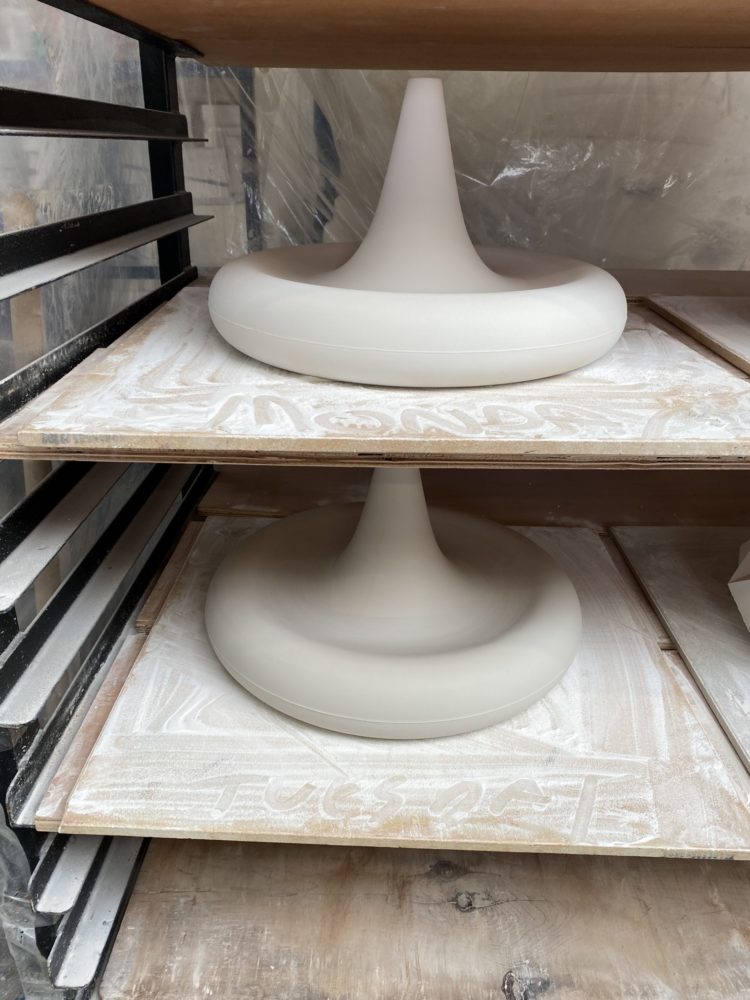
After this they are fettled (trimmed with a sharp knife to smooth the edges) and sponged to remove any marks or lines. Only then are they ready for firing. Drops One and Two can be either matt or gloss but the three is unglazed to emphasise the shape and purity of the material.
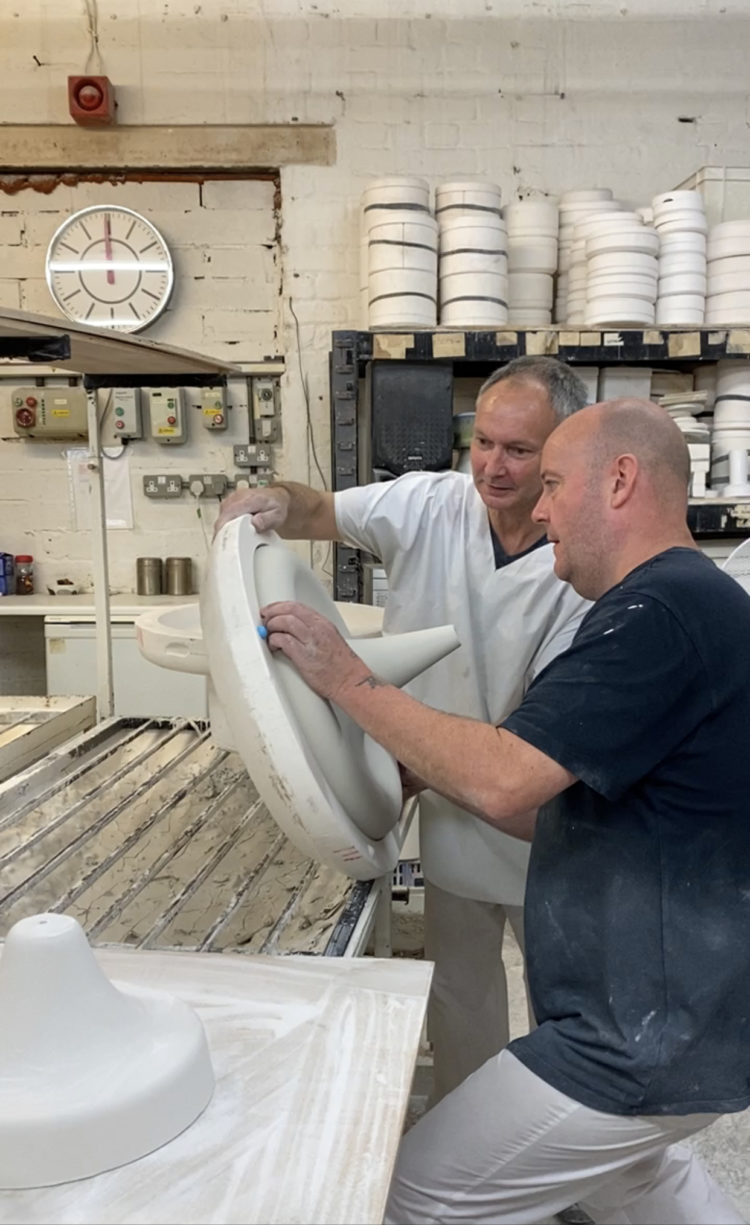
While the Drop Three is currently the most complex in the range, it’s not the only unusual light in the collection. The pebble chandelier is made from a series of irregular flat shapes that are fixed to brass stems. And the Oxford has a quilted pattern etched into the clay making it both tactile and soft-looking at the same time (there’s one at the top of this post if you didn’t notice on the way down).
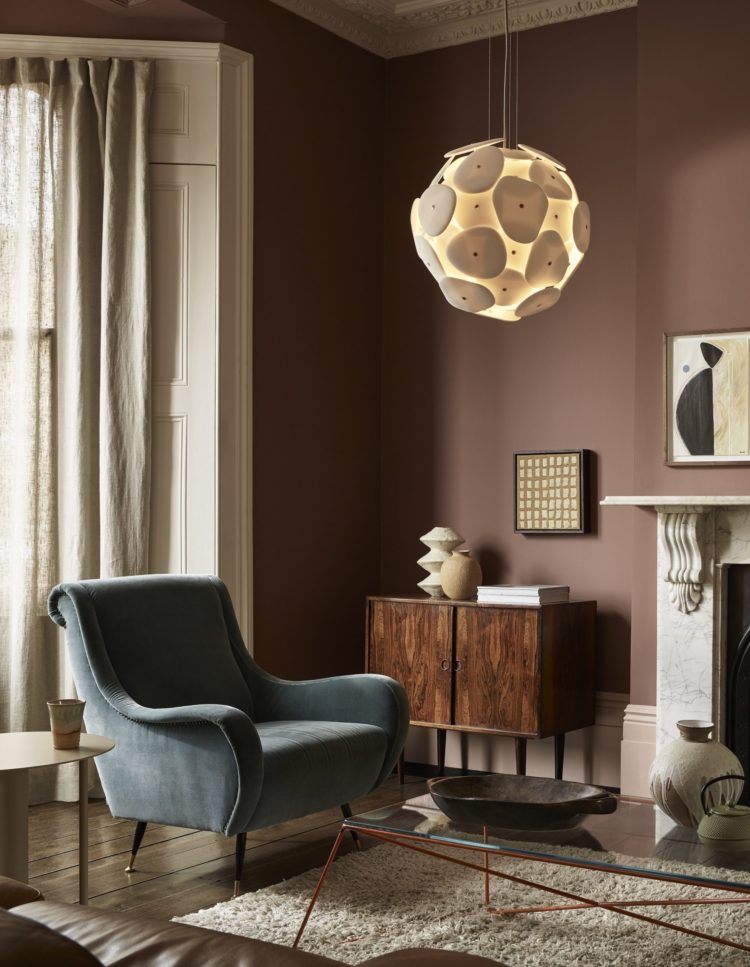
So this is a tale not just of a small British manufacturing company, but also of the continuation of traditional skills and a revival of an industry that was close to becoming extinct, as well as perseverance – I can’t think of many product designers who would keep trying for 20 years to get something right. Every shade passes through the hands of at least 10 people in the six days it takes to make each one and, as a final point, if you are unlucky enough to break yours, Original BTC sell replacement parts so you don’t have to throw it away.
This was a paid post for Original BTC but it has been a privilege to learn about this brand and I hope you have found it interesting. Original BTC now owns four factories in Stoke on Trent, Birmingham and Oxford, while all the components are sent to a fifth site, near the Oxford HQ for assembly. The company has also provided new revenue streams for the factories as they have moved from tableware and stained glass windows to lighting components while the craftsmen who work there are still able to use their specialist skills.





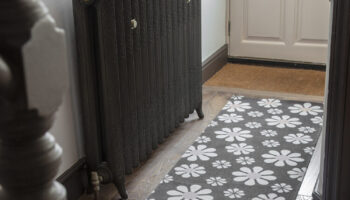
Love the soft lines of that drop 3. Thanks for sharing Kate.
I saved up hard for 2 bedside lights and I’m sorry to say the quality was awful. One just stopped working one day the other is still in use but shabby. The beautiful flex has frayed and the mechanism to change the angle of the light no longer works – the biggest disappointment as I’d longed for them for years
what a lamp i wish to buy this for our living room perfect choice for us
wish these are available in our country too i love these
Thanks for sharing! Glad to discover these beautiful fixtures are available in the U.S.
Brilliant. Thank you for shining a light on this skilled company. More crafts welcome.
fascinating … thank you